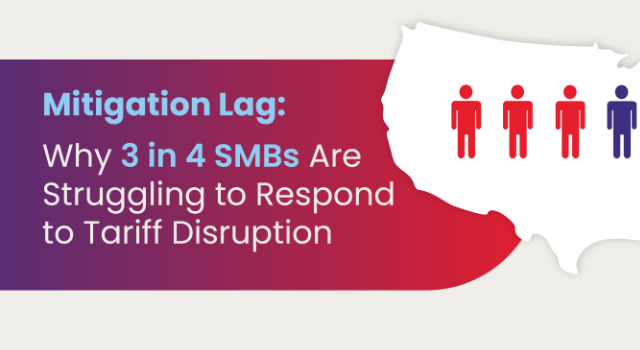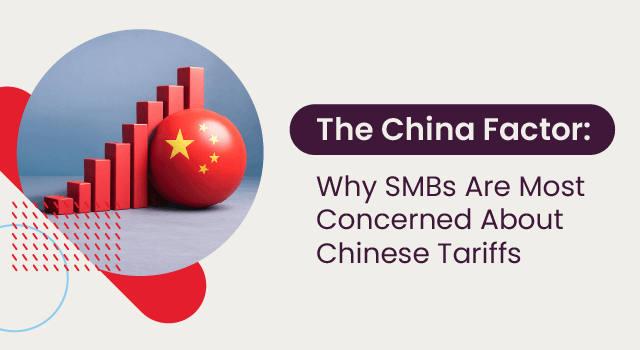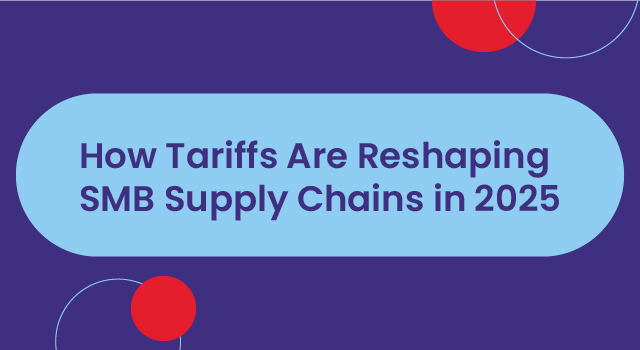Working with local suppliers can strengthen the US supply chain and increase businesses’ readiness to adapt to supply distributions.
Small to mid-sized businesses (SMBs) are the lifeblood of the US. Throughout the COVID-19 pandemic, there’s been a push to bring more manufacturing back to the country through reshoring and nearshoring strategies. A recent study reveals that 76% of US businesses with production in China have moved or are planning to change locations, with one-third doing so soon. The Executive Order on US supply chains passed by the Biden administration focuses on strengthening the resilience of supply chains, enabling domestic production to develop a world-class manufacturing hub to safeguard these supply chains from future disruptions.
The bill provides an excellent opportunity for SMBs to utilize grants and invest in predictive supply chain planning software that the most prominent players are already using. With the right solution in place, businesses gain visibility to work with reliable, stable local suppliers.
Michael Ryan, Founder & CEO of M.Ryan Group and veteran supply chain expert, share his views on the benefits of nearshoring.
#Q: Tell us a little about your background and how you got involved in the supply chain industry.
#Michael Ryan: Being curious about improving performance has been the main driver throughout my career. My first experiences as a process engineer showed firsthand how a small change upstream could significantly impact downstream results. Then, with General Electric in the early ’00, my focus shifted from manufacturing leadership to working with the commercial team. There, I saw the value of bridging sales and operations through the supply chain. For example, I saw how running out of a common chemical could stop the product’s shipment to the customer. In that role, the “dots got connected.” I’ve been involved in some aspects of the supply chain ever since.
#Q: Nearshoring is a hot topic in the US, but what is it, and why do you think it is finally prioritized?
#Michael Ryan: We learned throughout the pandemic that those products produced outside of the United States and shipped into the country had lead times increase from 2x-4x. Twelve-week lead time quickly became 26 weeks! In many cases, the trade-off between reduced costs and longer lead times no longer made financial sense. Reshoring is bringing production back to the United States for goods manufactured in the country. Nearshoring shifts production from the far East to Mexico or South America. While reshoring/nearshoring may be more expensive on a unit-cost basis, the speed at which we can supply those goods to a US customer base and improve working capital can help offset the cost.
#Q: What’s the most significant hurdle businesses/manufacturers face while implementing nearshoring?
#Michael Ryan: In some cases, raw materials and parts may still be sourced internationally, so locally held inventories may need to grow temporarily to offset supply chain variability.
#Q: What are some standard levers you see businesses turning to create supply chain resilience?
#Michael Ryan: First and foremost, it’s the investment in people, processes, and technology. I’ve worked with many clients who relied on “spreadsheet” planning for years, and the dramatic increase in lead time and variability has made a case for change. People with knowledge and experience come first. Then, a robust process that is: (1) definable, (2) predictable, and (3) repeatable. Technology becomes the enabler to support the people and the processes.
#Q: What technology should businesses consider to enable supply chain resilience?
#Michael Ryan: Implementing software that supports Integrated Business Planning (IBP) to build supply chain resilience is worth its weight in gold. As we continue navigating ongoing supply chain disruptions, businesses need a tool that incorporates demand and supply planning. That is the backbone of Sales & Operations Planning and a way to create the desired results. Being able to run scenarios to model the impact of changes along the supply chain helps make better decisions faster
#Q: Are any of your clients working towards pivoting this way? If so, what has their experience been?
#Michael Ryan: 100%, yes! One client had fill rates historically in the 90%, which plummeted to the low 60% over a brief period. We discovered that the supply chain and sales needed to communicate more regularly. Sales were up 22% yearly, while supply (purchase orders) only increased by 6%. The insult to injury was that supply chain planning was 100% spreadsheet-based. Once we identified the gap, we put processes in place to link sales to the supply chain and implemented Netstock as their planning tool. We saw significant improvements in results, specifically fill rates, over the next six months.
#Q: Some experts believe data is critical to achieving nearshoring. Do you agree?
#Michael Ryan: Data is a part of the solution, but it’s not the ‘make or break.’ Having people that can plan demand and supply in a structured process, supported by the software, is 90% of the battle. The last ~10% is the data.
You could have magnificent data, but if there isn’t a “brain in the seat” and a tool for them, actioning the data becomes exponentially more challenging.
#Q: What’s the top 5 benefits the US could experience from nearshoring?
#Michael Ryan:
- We become more self-sufficient as a country
- Creates opportunities for employment in the trades and across all professions
- Reduces variability along the supply chain by having greater control over production
- Helps balance US trade deficits
- Helps keep US businesses innovative and competitive
#Q: What’s the downside of nearshoring that businesses must be mindful of?
#Michael Ryan: The downside is that it will likely take businesses longer than they would like. Building new facilities, hiring and training new employees, or establishing new suppliers take time.
Global supply chains are considering more inventive ways to build resilience and sustainability. In a future filled with uncertainty, US businesses should consider alternatives, such as investing in the right technology to identify reliable domestic suppliers and manufacturers to safeguard against future black swan events.




